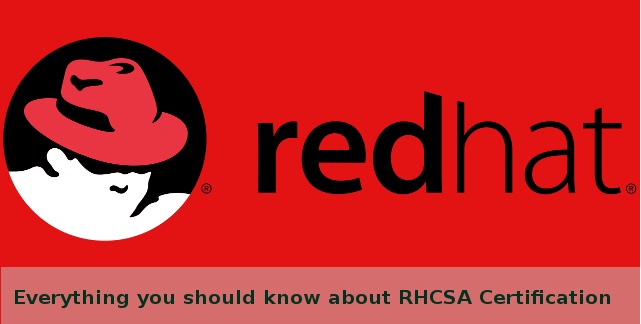Understand and Use Essential Tools:
1. Access a shell prompt and issue commands with correct syntax
2. Use input-output redirection (>, >>, |, 2>, etc)
3. Use grep and regular expressions to analyze text
4. Access remote systems using ssh
5. Log in and switch users in multiuser targets
6. Archive, compress, unpack, and uncompress files using tar, star, gzip, and bzip2
7. Create and edit text files
8. Create, delete, copy, and move files and directories
9. Create hard and soft links
10. List, set, and change standard ugo/rwx permissions (chapter 3)
11. Locate, read, and use system documentation including man, info, and files in /usr/share/doc (chapter 2)
Operate Running Systems
12. Boot, reboot, and shut down a system normally (chapter 7)
13. Boot systems into different targets manually (chapter 7)
14. Interrupt the boot process in order to gain access to a system (chapter 7)
15. Identify CPU/memory intensive processes, adjust process priority with renice, and kill processes (chapter 4)
16. Locate and interpret system log files and journals (chapter 7)
17. Access a virtual machine’s console (chapter 6)
18. Start and stop virtual machines (chapter 6)
19. Start, stop, and check the status of network services (chapter 7)
20. Securely transfer files between systems (chapter 13)
Configure Local Storage
21. List, create, and delete partitions on MBR and GPT disks (chapter 9)
22. Create and remove physical volumes, assign physical volumes to volume groups, and create and delete logical volumes (chapter
9)
23. Configure systems to mount file systems at boot by Universally Unique ID (UUID) or label (chapter 10)
24. Add new partitions and logical volumes, and swap to a system non-destructively (chapters 9 and 10)
Create and Configure File Systems
25. Create, mount, unmount, and use vfat, ext4, and xfs file systems (chapter 10)
26. Mount and unmount CIFS and NFS network file systems (chapters 10, 20, and 21)
27. Extend existing logical volumes (chapter 9)
28. Create and configure set-GID directories for collaboration (chapter 3)
29. Create and manage Access Control Lists (ACLs) (chapter 10)
30. Diagnose and correct file permission problems (chapter 3)
Deploy, Configure, and Maintain Systems
31. Configure networking and hostname resolution statically or dynamically (chapter 12 and 15)
32. Schedule tasks using at and cron (chapter 4)
33. Start and stop services and configure services to start automatically at boot (chapter 7)
34. Configure systems to boot into a specific target automatically (chapter 7)
35. Install Red Hat Enterprise Linux automatically using Kickstart (chapter 6)
36. Configure a physical machine to host virtual guests (chapter 6)
37. Install Red Hat Enterprise Linux systems as virtual guests (chapter 6)
38. Configure systems to launch virtual machines at boot (chapter 6)
39. Configure network services to start automatically at boot (chapter 7)
40. Configure a system to use time services (chapter 12 and 16)
41. Install and update software packages from Red Hat Network, a remote repository, or from the local file system (chapter 5)
42. Update the kernel package appropriately to ensure a bootable system (chapter 7)
43. Modify the system bootloader (chapter 7)
Manage Users and Groups
44. Create, delete, and modify local user accounts (chapter 8)
45. Change passwords and adjust password aging for local user accounts (chapter 8)
46. Create, delete, and modify local groups and group memberships (chapter 8)
47. Configure a system to use an existing authentication service for user and group information (chapter 12)
Manage Security
48. Configure firewall settings using firewall-config, firewall-cmd, or iptables (chapter 11)
49. Configure key-based authentication for SSH (chapter 13)
50. Set enforcing and permissive modes for SELinux (chapter 11)
51. List and identify SELinux file and process context (chapter 11)
52. Restore default file contexts (chapter 11)
53. Use boolean settings to modify system SELinux settings (chapter 11)
54. Diagnose and address routine SELinux policy violations (chapter 11)


